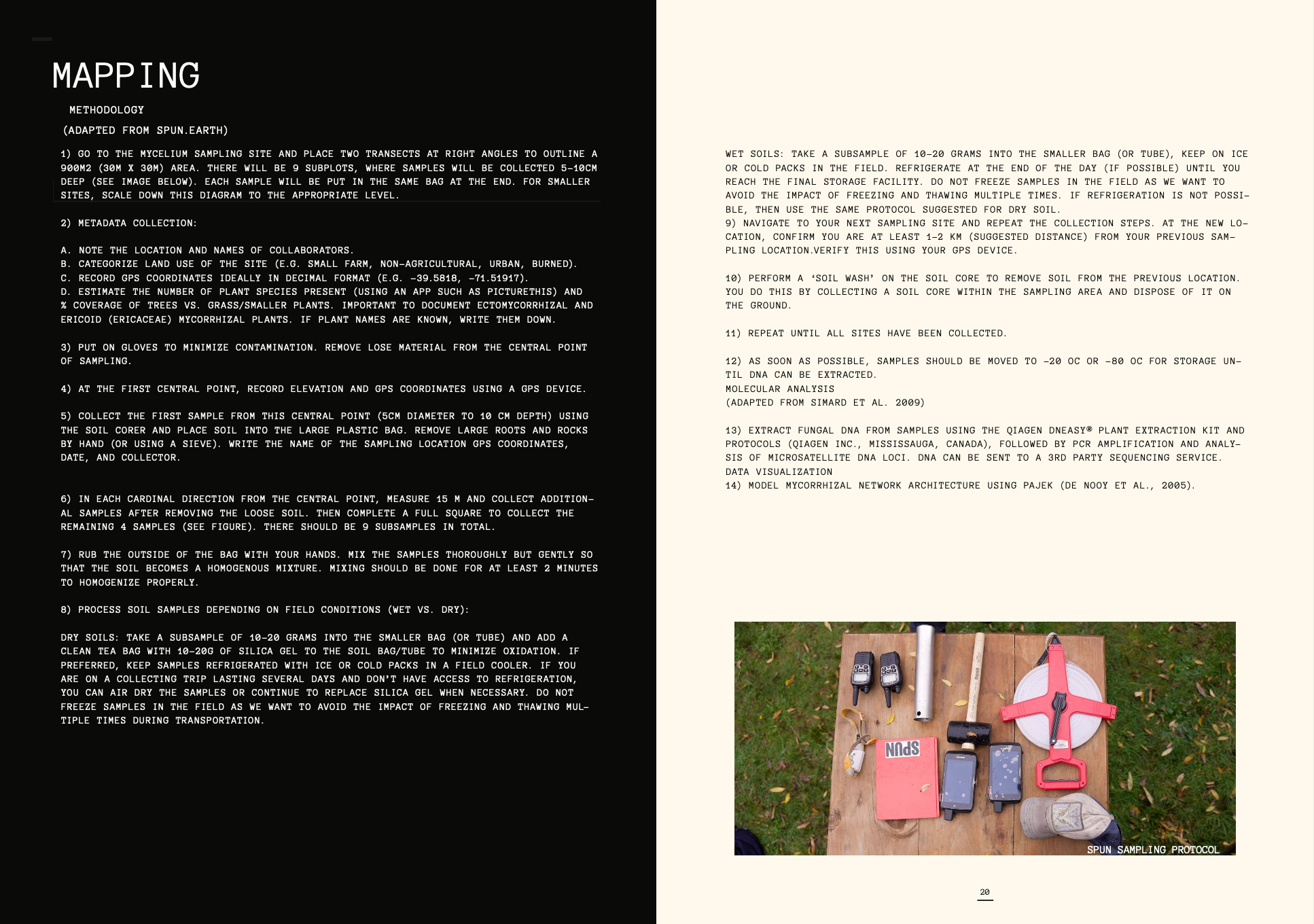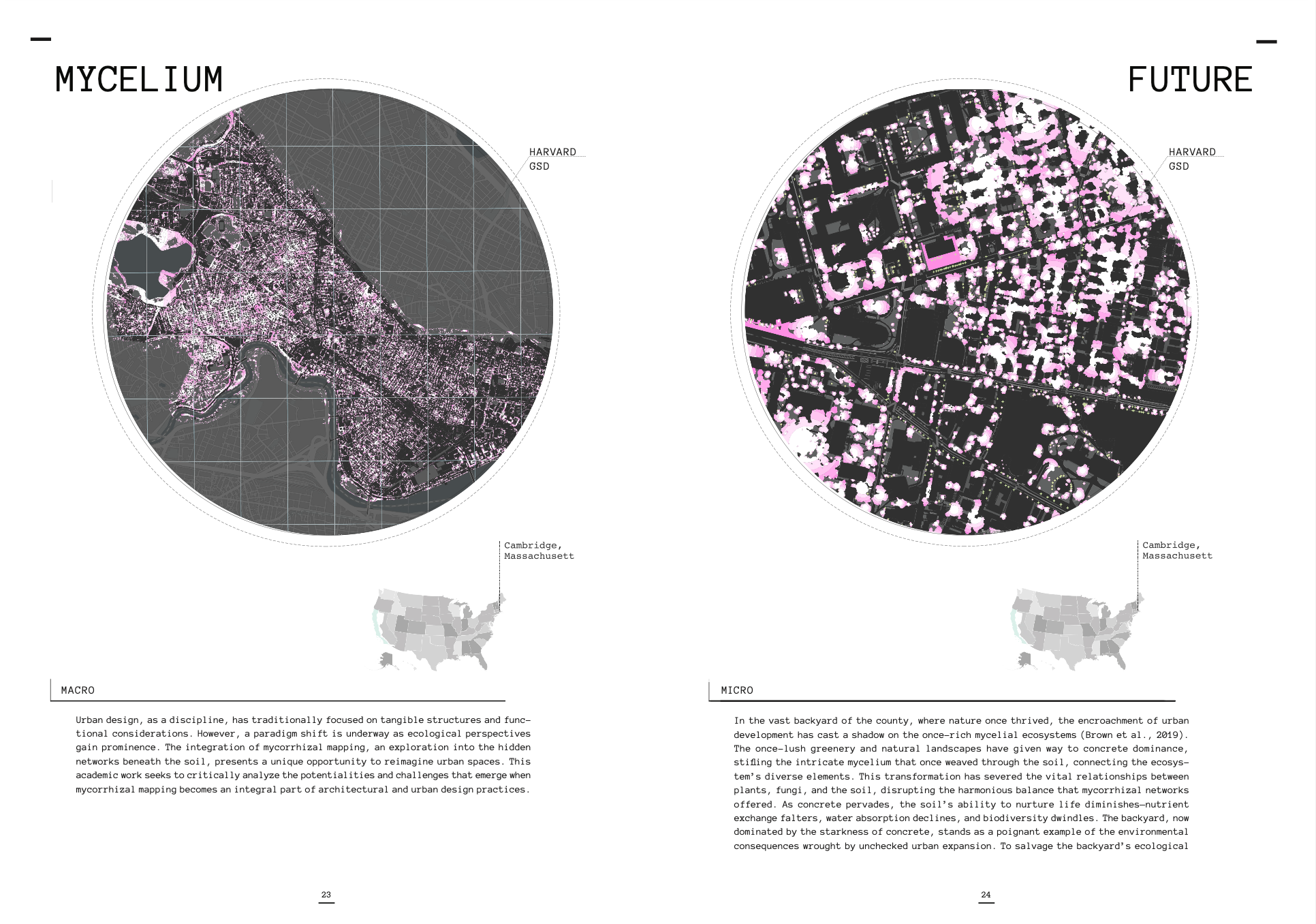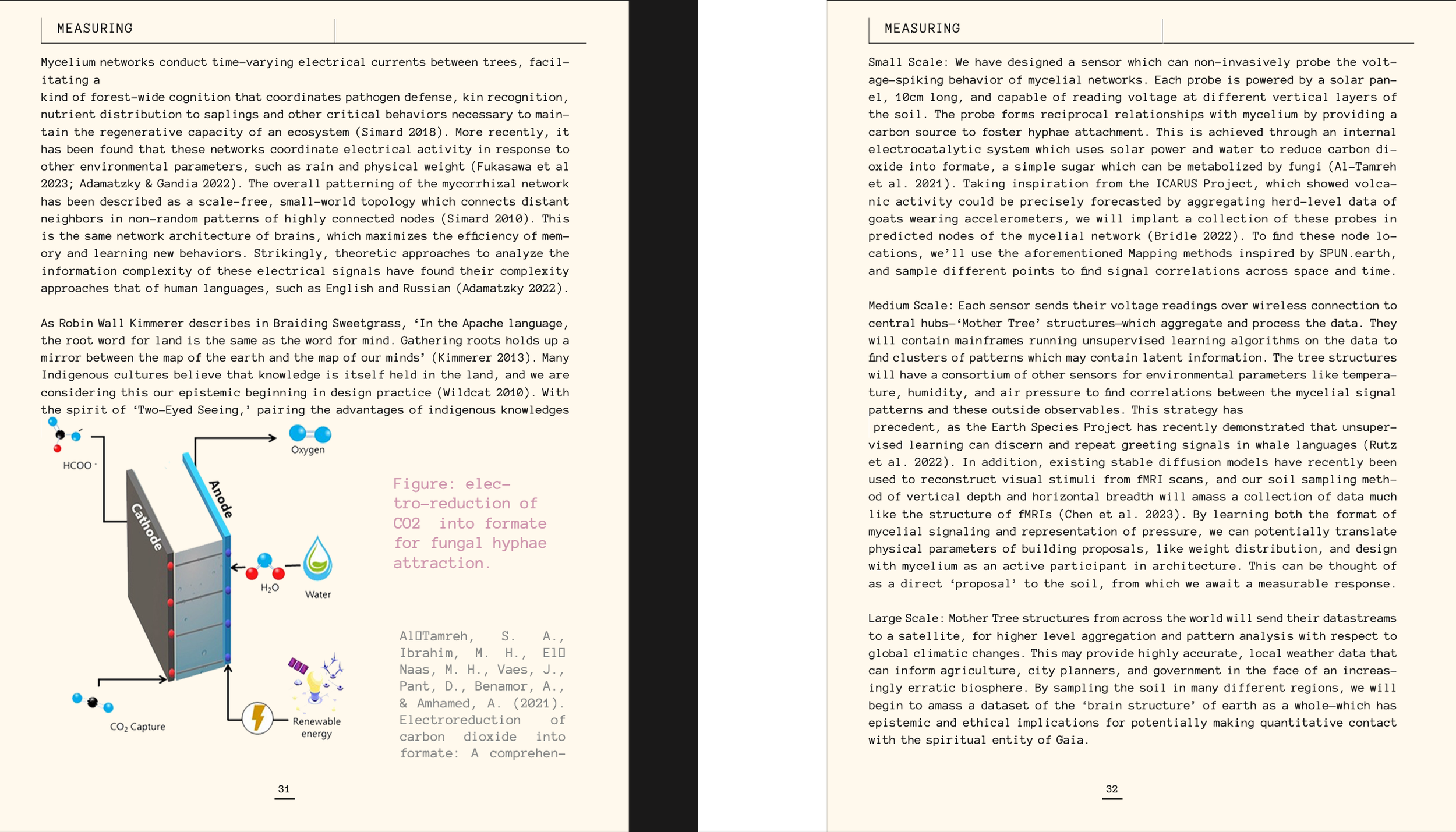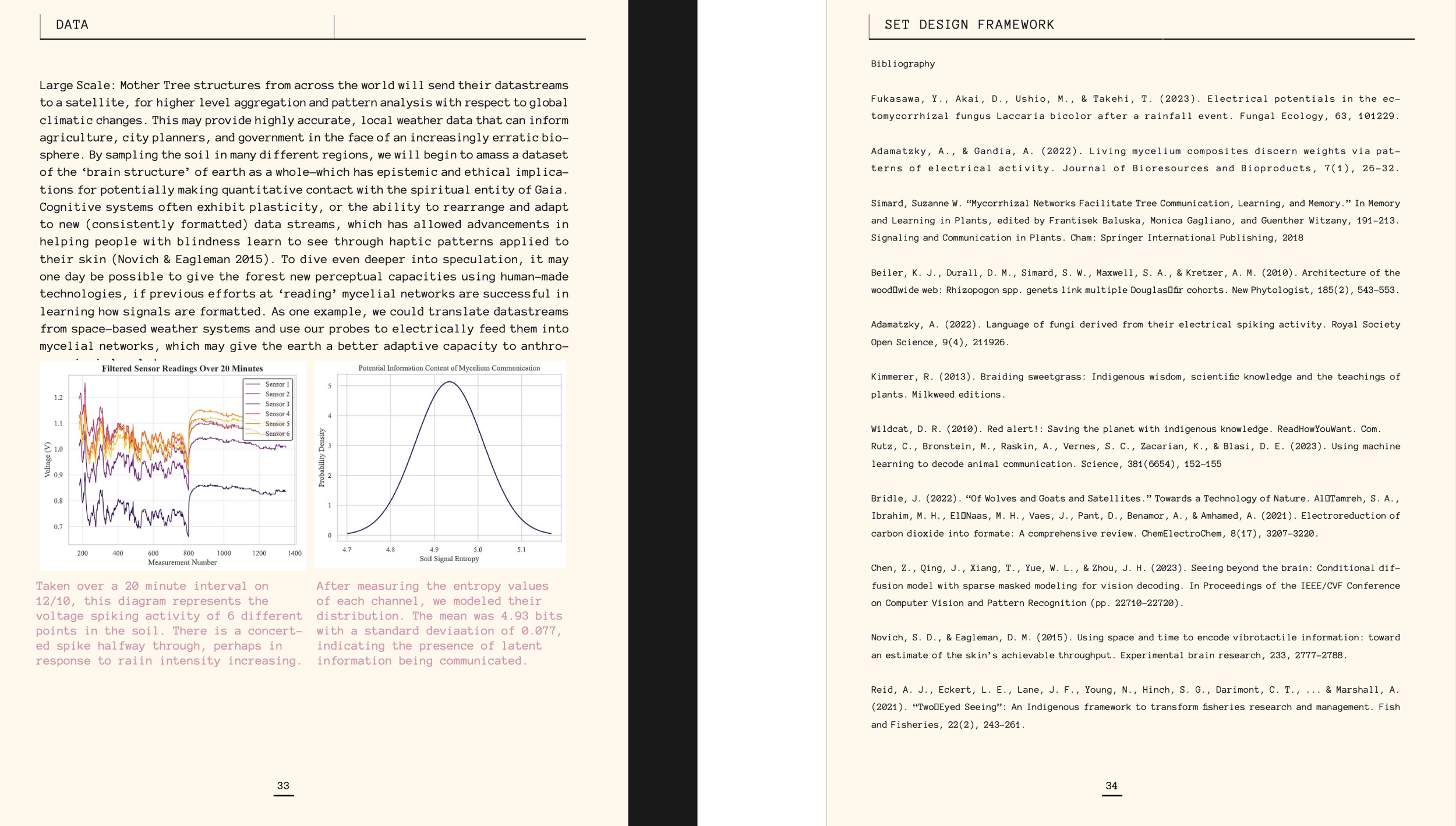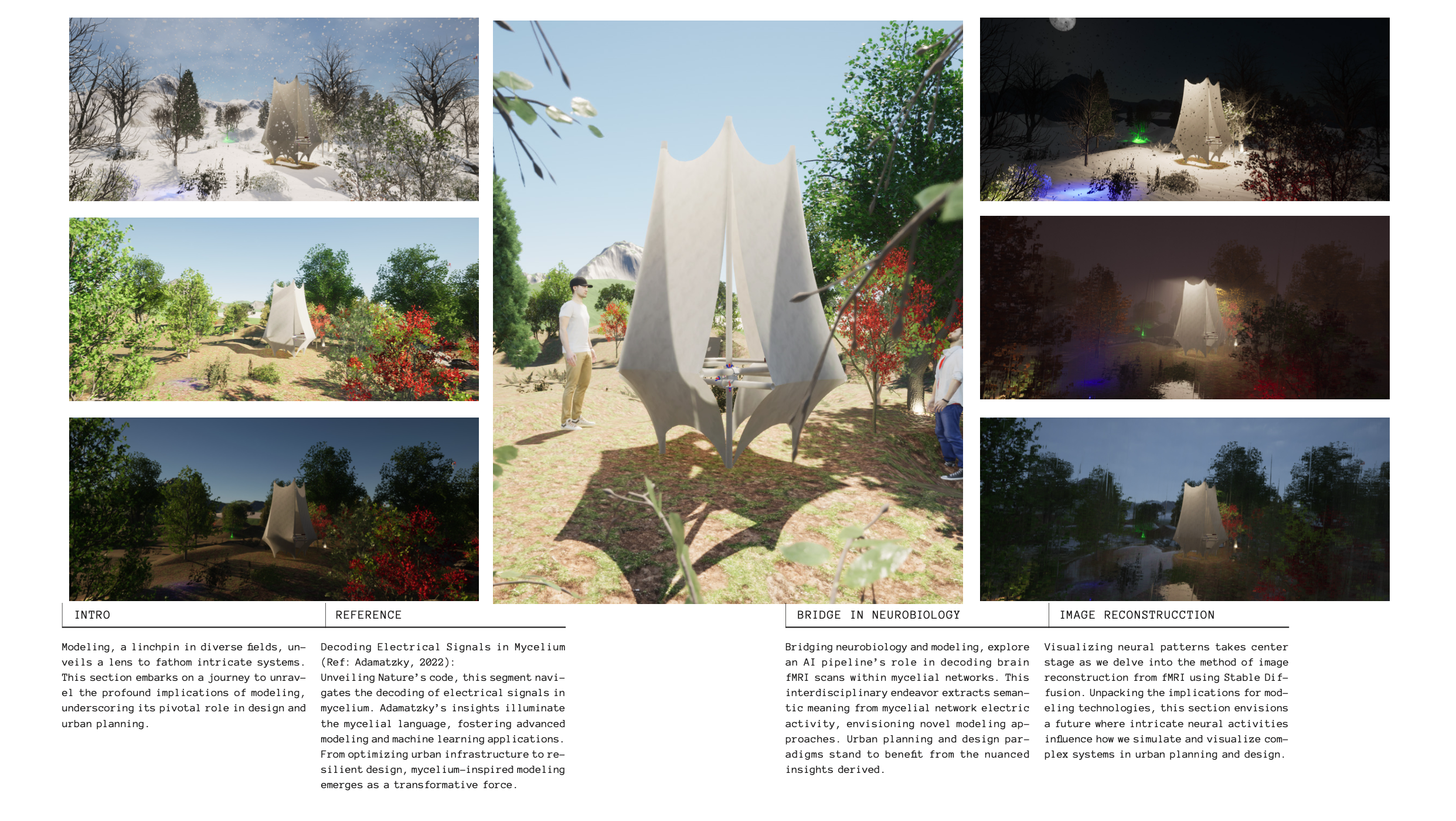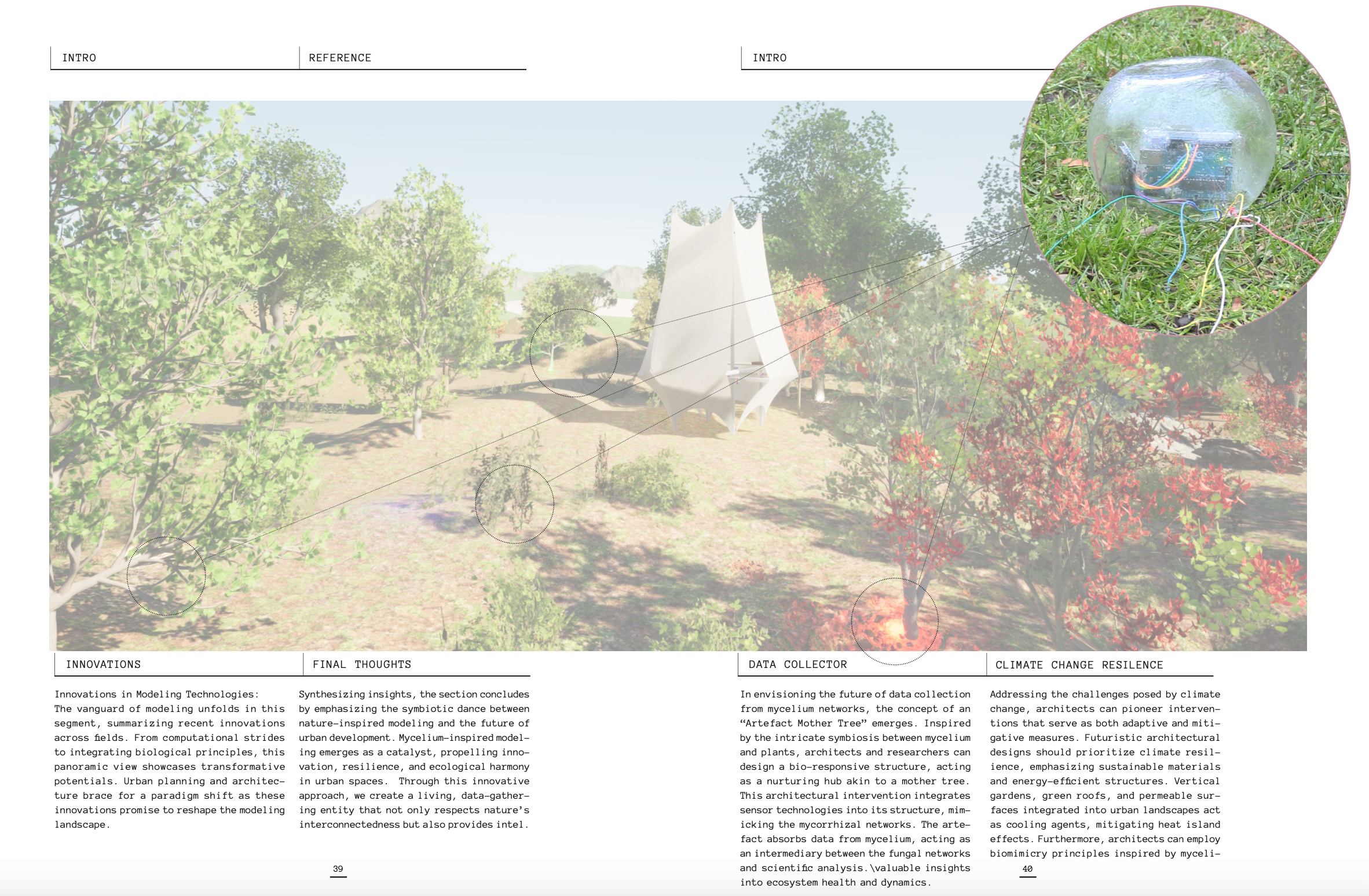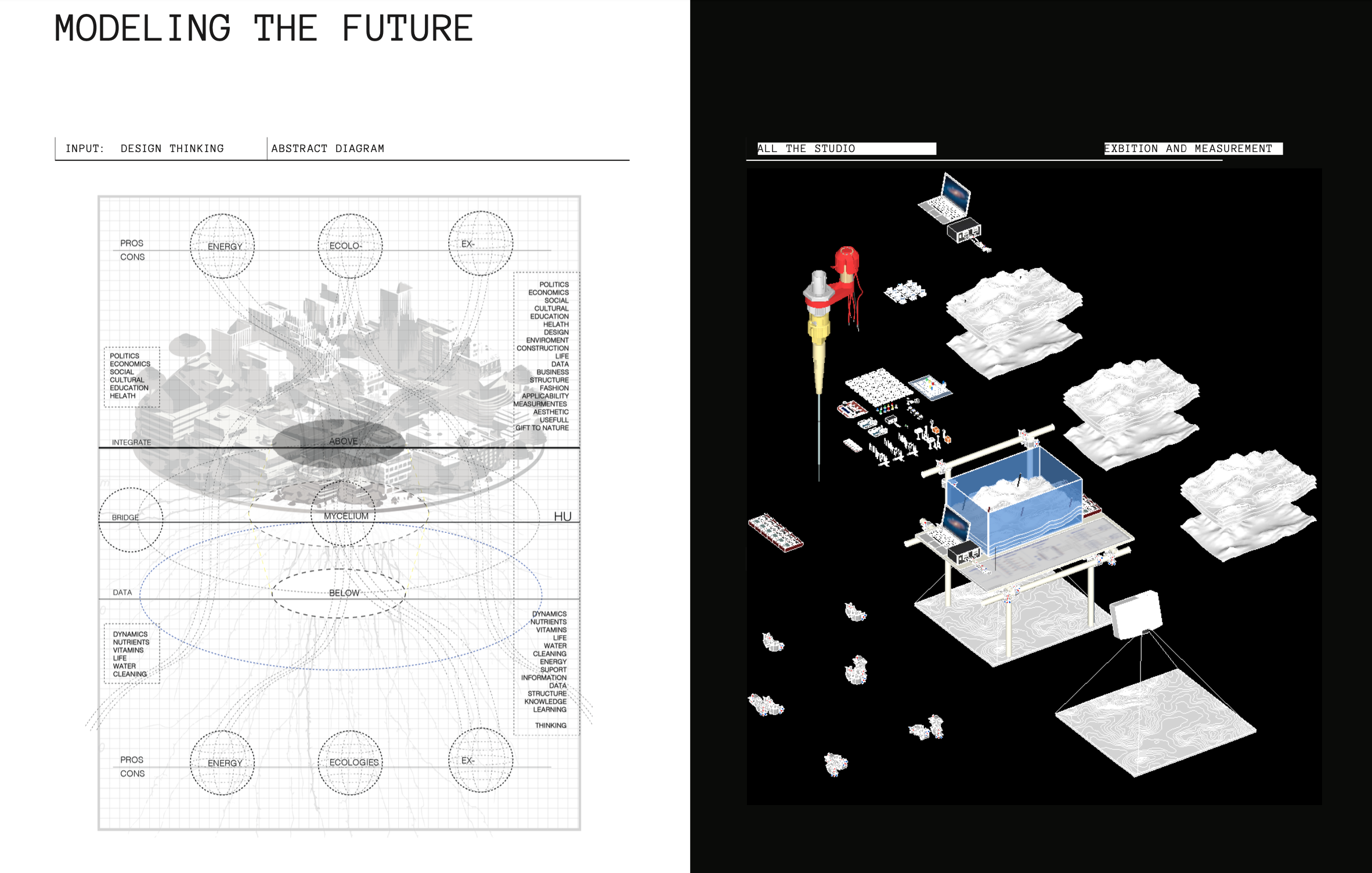
As Above So Below:
Co-designing the built environment with mycelium-based knowledge systems
The critical leap we must take in the 21st century is radically ancient: working with the more-than-human world to create mutually beneficial ways of living in contemporary ecosystems. Since 2020 marked the year where the human-built environment outweighed all organic lifeforms1, we ask the following question: what would it mean to design as an expression of the land itself? Working with architect Kevin Johnson, we sought to prototype this idea by interrogating one specific aspect of the land: subsoil mycelial networks. Because mycorrhizal networks are responsible for coordinating forest regeneration and have been called the ‘largest living cognition on earth,’2 we treat this network as a living library we can interface with in designing place-specific human settlements. We analyze this in 4 interrelated subsections: Mapping, Measuring, Modeling and Mimicking.
1) Elhacham, E., Ben-Uri, L., Grozovski, J. et al. Global human-made mass exceeds all living biomass. Nature 588, 442–444 (2020). https://doi.org/10.1038/s41586-020-3010-52) Jaeschke, Aleksandra. Presentation to MDes Ecologies Pro-Seminar at Harvard Graudate School of Design, Fall 2023. 
